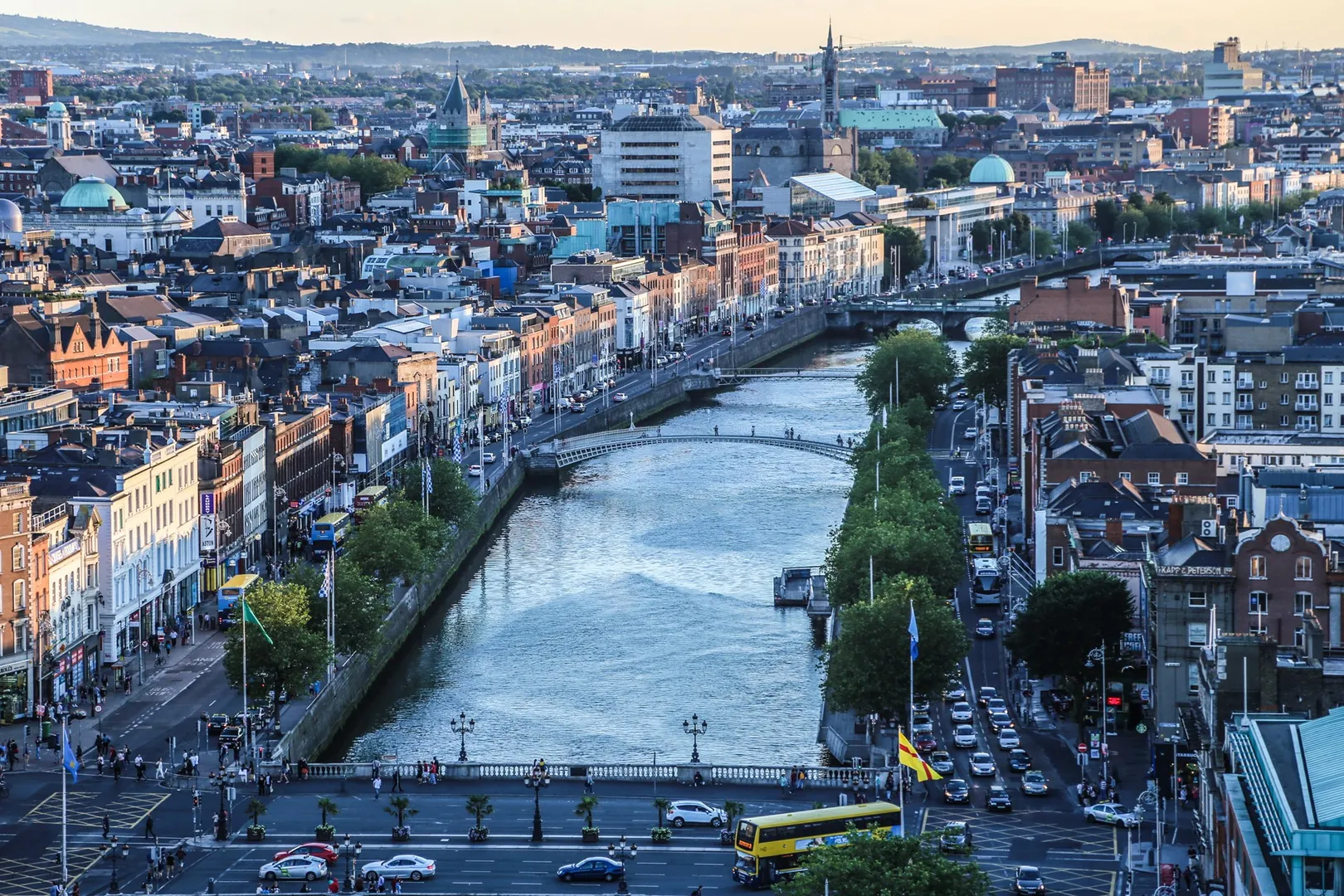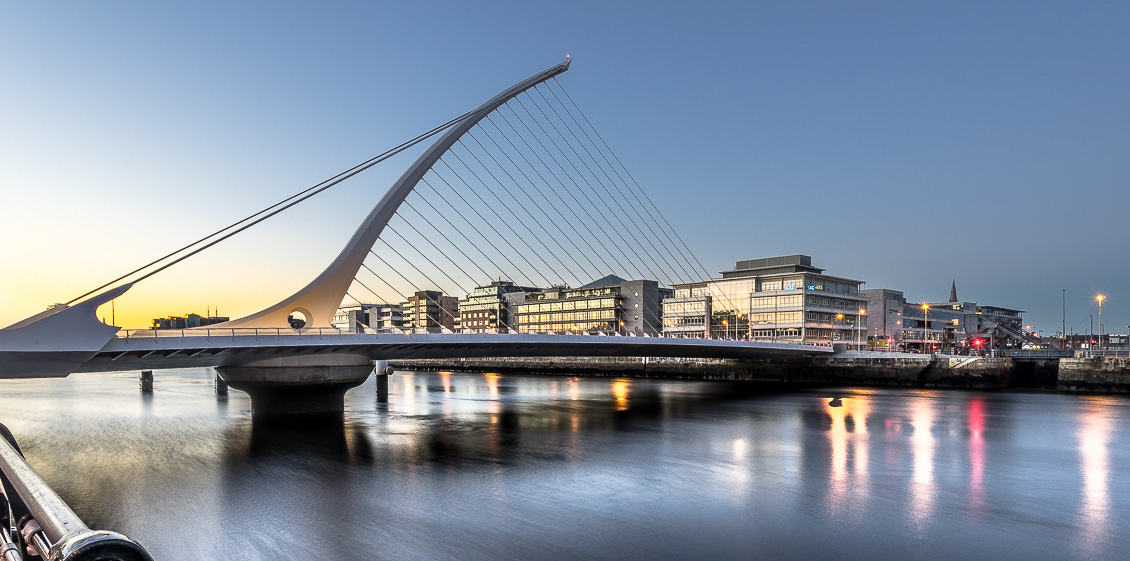Photo AI
Last Updated Sep 27, 2025
The Growth of Dublin City Simplified Revision Notes for Junior Cycle Geography
Revision notes with simplified explanations to understand The Growth of Dublin City quickly and effectively.
350+ students studying
The Growth of Dublin City
Growth of Dublin City
Dublin is the Irish capital. It has grown into a large city of 2 million people. It has developed because of:
- Planning: Local councils control development, influencing where and how the city expands.
- Social and Economic Policy: Government policies on industry, housing, and investment drive Dublin's expansion, allowing outward growth with lower building heights.
- Population: Population changes increase demand for housing and services, leading to more construction.
- Transport: Improved roads encourage commuting, but heavy car use causes traffic and pollution, needing better public transport planning.
History of Dublin Urban Growth
- Gaelic Settlement: Early settlement near the River Liffey by Gaelic people before the Vikings.
- Viking Town (9th Century): Vikings established Dublin as a major trading hub with a fortified town.
- Anglo-Norman Era (Medieval Period): Anglo-Normans took control in 1172, expanding the city and fortifying it further.
- Georgian Expansion (18th Century): Dublin grew rapidly, with new squares, wide streets, and canals. The city became a cultural and economic centre.
- Victorian Period (19th Century): Population doubled due to in-migration and the Great Famine. Overcrowding and slums increased, but suburban growth began with new railways.
- Modern Dublin (20th Century Onwards): Rapid expansion as the city spread westwards into new suburbs and towns. Economic growth in the 1990s brought further development, including regeneration projects and increased immigration.

Consequences of Dublin's Growth
- Primacy of Dublin:
- Dublin is Ireland's primate city, significantly larger than other cities. It is the seat of government, a major transport hub, and the financial and educational centre of the country. This has led to a concentration of population and services in Dublin, influencing the growth and distribution of surrounding towns.
- Functional Zones:
- Dublin has distinct zones, such as the Central Business District (CBD) for business and shopping, industrial estates on the outskirts, residential areas that range from high-density city apartments to suburban houses, and recreational areas like parks.
- Urban Problems:
- Urban Decline: Parts of inner-city Dublin have deteriorated as people moved to suburbs, leading to unemployment, derelict buildings, and high crime rates.
- Unemployment: High in inner-city areas due to the relocation of industries to the suburbs, resulting in fewer jobs and business closures.
- Crime: High unemployment has led to increased crime, especially drug-related crime, in the inner city.
- Urban Sprawl: Dublin's expansion into the countryside has caused issues like inadequate services, traffic congestion, and loss of rural land. This has led to poorly planned suburbs with low-density housing, straining infrastructure and services like transport, schools, and healthcare.

Dublin's Docklands have undergone redevelopment
Solutions to Urban Problems
- Urban Renewal:
- Involves updating areas without changing their function. Derelict buildings are refurbished or replaced, and services like transport, shops, and schools are improved. Example: Dublin's inner-city renewal in the 1990s.
- Urban Redevelopment:
- Involves changing the land use of an area, often from residential to commercial. Old buildings are demolished, and new ones, such as offices or shops, are constructed. Example: Redevelopment of Dublin's docklands.
- Planning New Towns:
- New towns are built on the outskirts of cities to reduce urban sprawl and take on excess population. These towns are well-planned with good transport links and facilities. Examples: Tallaght and Adamstown in Dublin.

Tallaght is a new town developed to accommadate Dublin's growing population.
Case Study 1: The Ballymun Regeneration Project
- Background
- Ballymun was built in the 1960s to address Dublin's housing shortage.
- It included seven 15-storey tower blocks and thousands of flats.
- Over time, poor planning, lack of services, and social issues led to high unemployment, crime, and drug problems.
- Problems
- High-rise flats became rundown and unsafe.
- Families had little access to shops, schools, or recreational spaces.
- The area developed a negative reputation and suffered from social exclusion.
- Regeneration
- In the 1997 Ballymun Regeneration Project, Dublin City Council began one of Europe's largest urban renewal schemes.
- The project demolished the old tower blocks and replaced them with low-rise housing.
- New facilities were built: schools, parks, leisure centres, and a town centre.
- Community programmes were introduced to improve education, employment, and quality of life.
- Outcomes
- The physical environment improved with better housing and green spaces.
- Many social issues remain (e.g. unemployment is still higher than average), but the regeneration significantly reduced crime and dereliction.
Ballymun shows how urban renewal can transform a struggling inner-city area, though challenges take time to resolve
Case Study 2: Dublin Docklands Redevelopment
- Background
- Dublin's Docklands were once a busy shipping and industrial hub.
- By the 1970s–80s, containerisation moved shipping downstream, leaving warehouses derelict and unemployment very high.
- The area was associated with urban decline, poverty, and crime.
- Redevelopment
- In the 1990s, the government created the Dublin Docklands Development Authority (DDDA) to oversee regeneration.
- The land was rezoned and old warehouses were replaced with modern offices, apartments, hotels, and cultural venues.
- The International Financial Services Centre (IFSC) was developed, attracting global banks and finance companies.
- New bridges (e.g. the Samuel Beckett Bridge) and improved public transport connected the Docklands to the city centre.
- Outcomes
- The Docklands became a major hub for finance and technology, with companies like Google, Facebook, and Accenture locating there.
- Thousands of new jobs were created in banking, IT, and services.
- The area now has a mix of luxury apartments, offices, shops, and cultural spaces (e.g. the Bord Gáis Energy Theatre).
- However, critics argue that redevelopment led to gentrification, pushing out some local residents who could not afford rising rents.

500K+ Students Use These Powerful Tools to Master The Growth of Dublin City For their Junior Cycle Exams.
Enhance your understanding with flashcards, quizzes, and exams—designed to help you grasp key concepts, reinforce learning, and master any topic with confidence!
10 flashcards
Flashcards on The Growth of Dublin City
Revise key concepts with interactive flashcards.
Try Geography Flashcards1 quizzes
Quizzes on The Growth of Dublin City
Test your knowledge with fun and engaging quizzes.
Try Geography Quizzes46 questions
Exam questions on The Growth of Dublin City
Boost your confidence with real exam questions.
Try Geography Questions27 exams created
Exam Builder on The Growth of Dublin City
Create custom exams across topics for better practice!
Try Geography exam builder60 papers
Past Papers on The Growth of Dublin City
Practice past papers to reinforce exam experience.
Try Geography Past PapersOther Revision Notes related to The Growth of Dublin City you should explore
Discover More Revision Notes Related to The Growth of Dublin City to Deepen Your Understanding and Improve Your Mastery
Load more notes